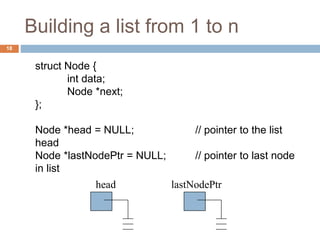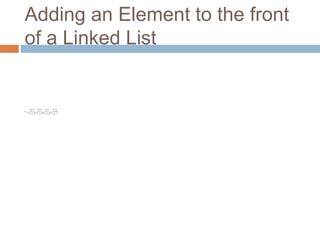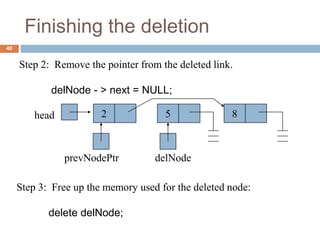The document discusses linked lists and their basic operations. It defines a linked list as a series of connected nodes where each node contains a data element and a pointer to the next node. The basic operations of linked lists include inserting nodes, finding or deleting nodes by value, and traversing the list. It also discusses different types of linked lists like singly linked lists, doubly linked lists, and circular linked lists. The document explains how to implement operations like insertion, deletion, and traversal in detail with examples.











































